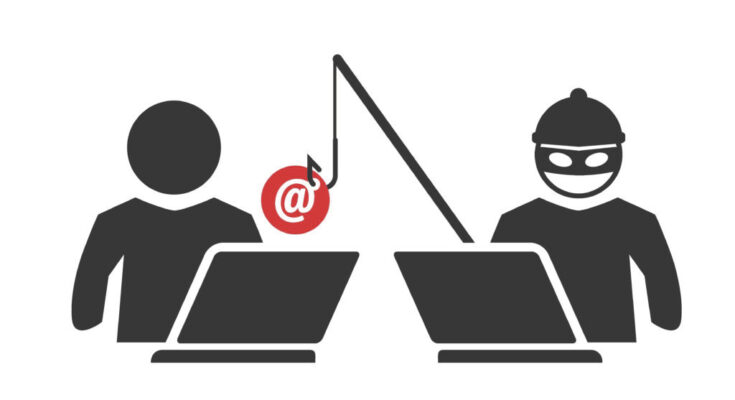In the ever-evolving world of cybersecurity, the threats we face are becoming increasingly sophisticated and deceptive. One such threat that has gained notoriety in recent years is “pretexting.” It’s a tactic that relies on manipulation and social engineering to breach the walls of security. Pretexting is not only a concern for large corporations and governments but also for individuals. In this article, we’ll uncover the hidden world of pretexting in cybersecurity. We’ll explore what it is, how it works, and most importantly, how you can defend yourself and your organization against this clever, yet potentially devastating, form of cyberattack. Whether you’re a tech enthusiast, a business owner, or just someone who wants to stay safe online, understanding pretexting is essential for safeguarding your digital life.
Unveiling the Art of Pretexting
The Art of Deception
Pretexting is a social engineering tactic that involves an attacker creating a fabricated scenario or pretext to manipulate individuals into divulging confidential information. This fabricated scenario often includes a compelling backstory, making it appear legitimate and trustworthy.
What Makes Pretexting So Dangerous?
What sets pretexting apart is its reliance on human psychology rather than technical vulnerabilities. It preys on trust, curiosity, and the desire to be helpful, making it a formidable tool for attackers.
The Anatomy of a Pretexting Attack
A typical pretexting attack unfolds in several steps:
Planning and Research: Attackers conduct extensive research on their target. This can involve gathering information from social media, public records, or other online sources.
Creating a Believable Scenario: Attackers develop a convincing backstory or scenario. This can be a request for information, assistance, or even posing as a trusted individual, such as an employee or a service provider.
Engaging the Target: Attackers make contact with the target, presenting their fabricated scenario and request. This can happen through various communication channels, such as email, phone, or even in person.
Manipulating Trust: Using charm, manipulation, and social engineering, attackers build trust with the target, making them more likely to provide the requested information
Obtaining Information: The attacker’s ultimate goal is to obtain sensitive information, such as login credentials, financial data, or personal details.
How Pretexting Attacks Work
1. Email Pretexting
In an email pretexting attack, an attacker sends a deceptive email, often posing as a trusted source, such as a colleague, a manager, or a well-known service provider. The email may request sensitive information, financial transactions, or other actions that compromise security.
2. Phone Pretexting
Phone pretexting, often referred to as “vishing” (voice phishing), involves attackers calling individuals and posing as legitimate authorities, like bank representatives or IT support. These calls aim to extract sensitive data or persuade the victim to perform actions that can compromise security.
3. In-Person Pretexting
Attackers may physically visit a location or office and impersonate a trusted person or entity. They can gain access to restricted areas or convince employees to provide information or perform actions that compromise security.
The Dangers of Pretexting
1. Data Breaches
Pretexting can lead to data breaches, where sensitive information, such as personal data, financial details, or corporate secrets, is exposed to unauthorized parties.
2. Identity Theft
Attackers can use pretexting to gather enough information to steal a person’s identity, leading to potential financial and legal troubles for the victim.
3. Financial Loss
Pretexting can result in financial losses for individuals and organizations. This may include unauthorized transactions, fraudulent wire transfers, or stolen funds.
4. Reputation Damage
A successful pretexting attack can tarnish an individual or organization’s reputation, eroding trust and credibility.
Defending Against Pretexting
1. Awareness and Education
Education is the first line of defense. Train yourself and your employees to recognize common pretexting tactics and be skeptical of unsolicited requests for information or actions.
2. Verify Requests
If you receive a request for sensitive information or actions, verify it independently. Use contact information you already have or trust rather than the information provided in the request.
3. Use Multi-Factor Authentication (MFA)
MFA adds an extra layer of security, making it more challenging for attackers to gain access to accounts, even if they obtain login credentials.
4. Implement a Data Protection Policy
For organizations, having a data protection policy in place helps manage and secure sensitive information effectively. This includes defining how data is collected, processed, and stored.
5. Secure Communication Channels
Ensure that communication channels, such as email and phone lines, are adequately protected. Implement encryption and security measures to safeguard against pretexting attacks.
Conclusion: Guarding Against Deceptive Threats
In the evolving landscape of cybersecurity, pretexting stands out as a threat that cunningly exploits human psychology and trust. It serves as a reminder that the strongest security measures can be undermined if individuals and organizations are not vigilant. Understanding how pretexting works and taking proactive steps to defend against it is vital for safeguarding your digital life and assets.
As we navigate the digital world, let’s remember that not everything is as it seems, and sometimes the most dangerous threats come wrapped in an alluring pretext. Stay aware, stay informed, and stay secure – it’s your best defense against those who seek to exploit the trust you place in the digital realm.




